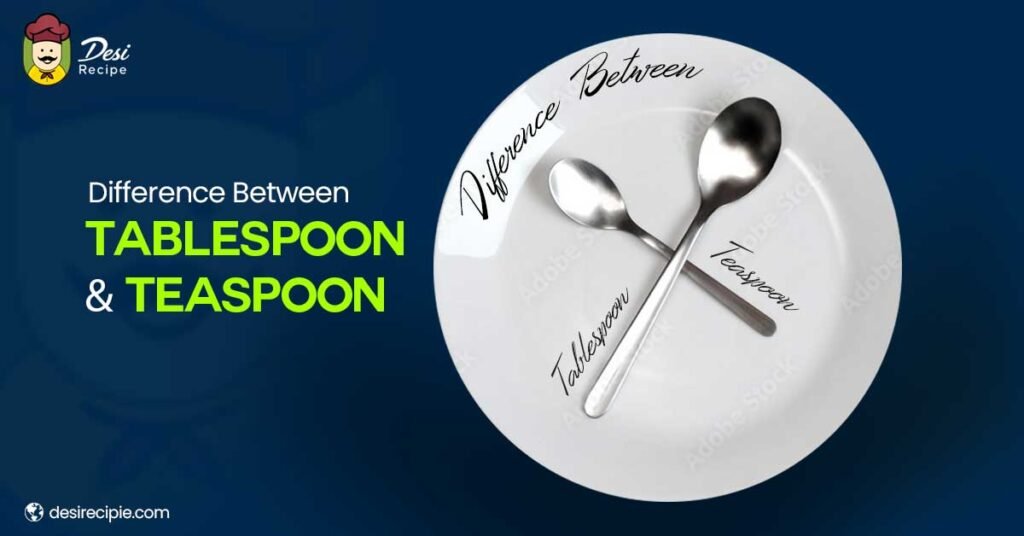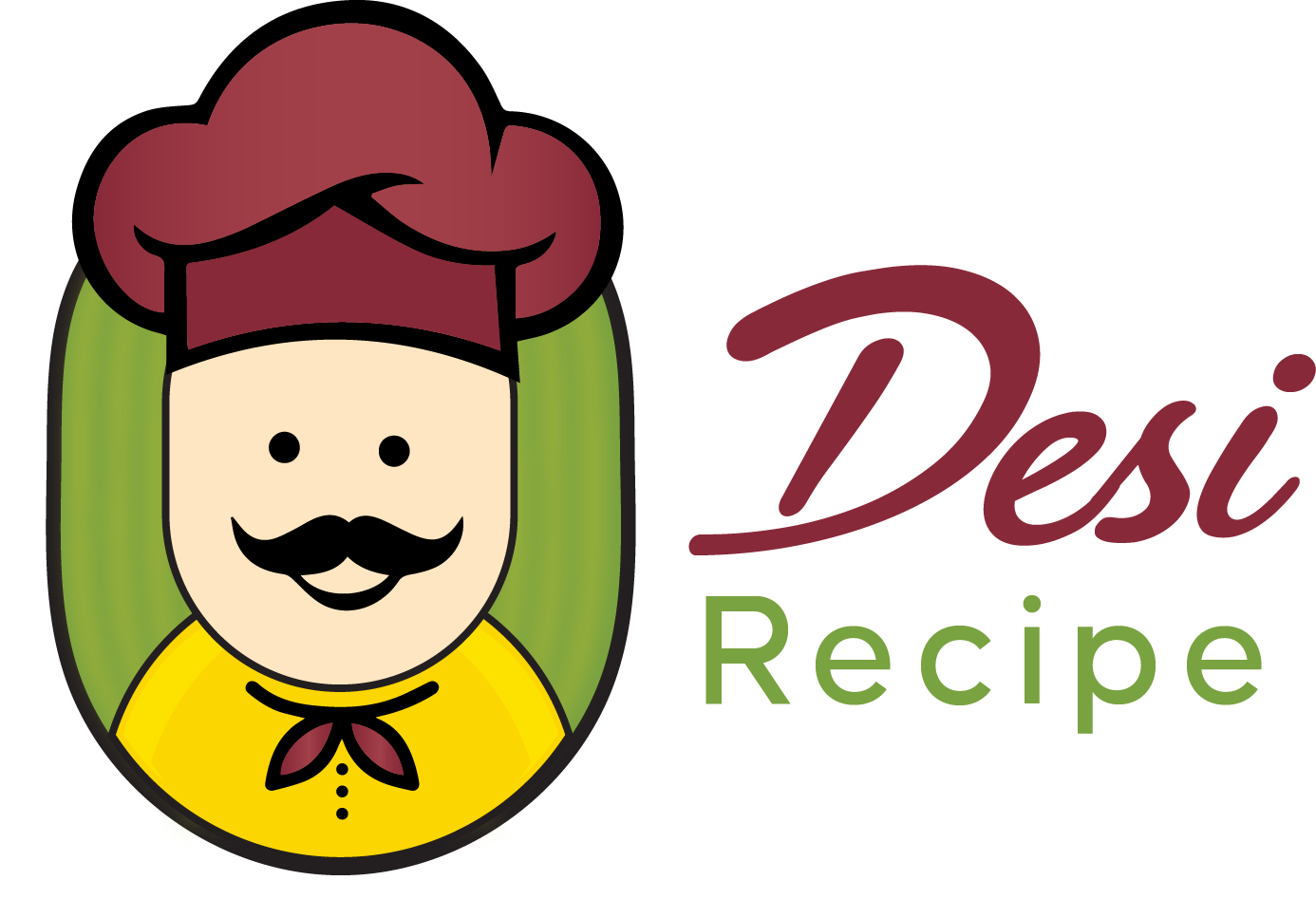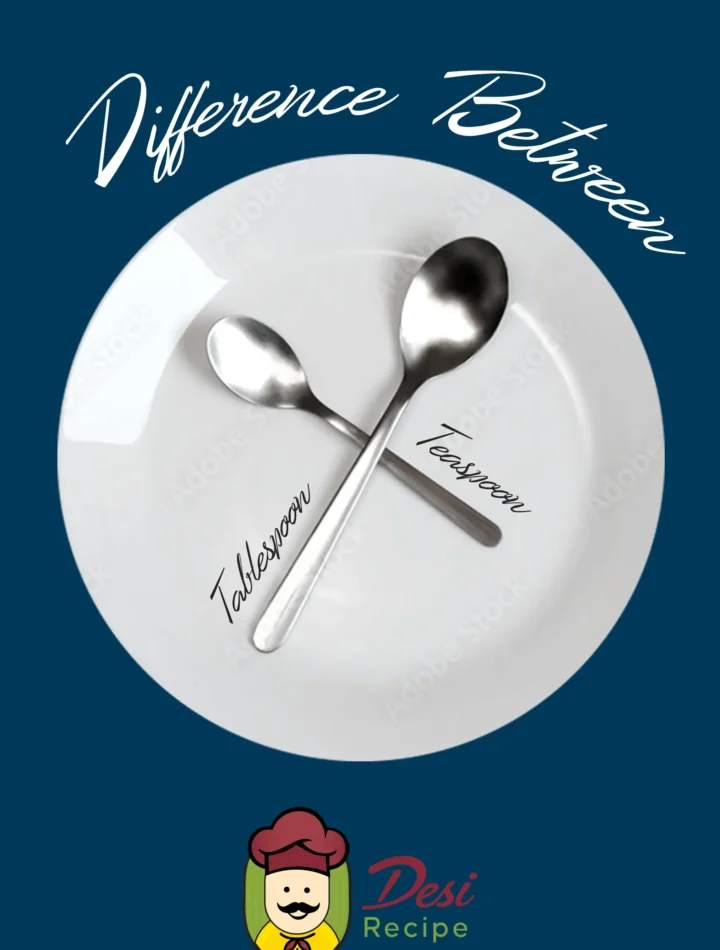In the world of cooking and baking, precise measurements are the foundation of successful dishes. When it comes to measurements, two common terms frequently appear: teaspoon vs tablespoon. These seemingly simple utensils hold the power to influence the taste, texture, and overall outcome of your culinary creations. In this article, we’ll explore the differences between teaspoons and tablespoons, understand their capacities, and delve into their roles in cooking and baking.

What is a Teaspoon and What is its Capacity?
A teaspoon is a small measuring utensil with a capacity of approximately 5 milliliters (ml) or 1/3 of a tablespoon. It’s often marked with the abbreviation “tsp” and is used to measure smaller quantities of ingredients, such as spices, flavorings, or small amounts of liquids.
What is a Tablespoon and What is its Capacity?
A tablespoon, denoted by “Tbsp” or “tbsp,” is a larger measuring utensil with a capacity of around 15 milliliters (ml) or 3 teaspoons. It’s used to measure larger volumes of ingredients, such as liquids, dry goods, and other recipe components.
Why is it Important to Distinguish Between Teaspoons and Tablespoons?
Distinguishing between teaspoon vs tablespoon is crucial to ensure accurate measurements in recipes. Using the right amount of each ingredient not only affects the taste and texture of the final dish but also contributes to the overall success of your culinary endeavors.
How Many Teaspoons are in a Tablespoon and Vice Versa?
There are 3 teaspoons in 1 tablespoon. Conversely, 1 teaspoon is equal to 1/3 of a tablespoon. This difference in size and capacity has a significant impact on cooking and baking measurements.
Understanding the Measurement Discrepancy: Fluid Ounces and Milliliters:
In addition to teaspoon vs tablespoon, recipes may also provide measurements in fluid ounces (fl oz) or milliliters (ml). One fluid ounce is equivalent to approximately 2 tablespoons or 6 teaspoons. Being familiar with these conversions ensures accuracy when following recipes.
How Does the Size Difference Impact Cooking and Baking?
The size difference between teaspoons and tablespoons can significantly alter the flavor, texture, and consistency of your dishes. Using the wrong measurement can lead to under-seasoned or overly seasoned dishes, as well as affect the chemistry of baked goods.
Cooking and Baking: Teaspoon and Tablespoon Usage:
Common Culinary Measurements Using Teaspoons:
Teaspoons are often used to measure ingredients that require precision, such as baking powder, baking soda, vanilla extract, and spices. Small quantities of liquid flavorings, like lemon juice or soy sauce, are also accurately measured using teaspoons.
Common Culinary Measurements Using Tablespoons:
Tablespoons excel at measuring larger quantities of ingredients. They are employed for measuring oils, sauces, dressings, and ingredients like sugar, flour, and cocoa powder. Their larger capacity makes them indispensable for recipes that demand precise ratios.
When to Use Teaspoons vs Tablespoons in Recipes:
The choice between a teaspoon vs Tablespoon depends on the ingredient’s quantity and the desired impact on the dish. Delicate seasonings and potent flavorings often require teaspoons, while bulkier ingredients, like wet and dry measurements, are aptly measured using tablespoons.
Precision and Consistency: Accuracy Matters:
The Importance of Accurate Measurement in Cooking:
Accurate measurement is the backbone of consistent and delicious cooking. Small deviations in measurements can lead to flavor imbalances or undesirable textures, affecting the overall dining experience.
How Precision Affects the Outcome of Dishes:
A pinch more or a dash less can make all the difference in your culinary creation. Precise measurements ensure that your dishes turn out as intended, maintaining the integrity of the recipe’s flavors and textures.
Avoiding Overuse or Underuse of Ingredients:
Using teaspoon vs tablespoon accurately prevents overuse or underuse of essential ingredients. Over-seasoning or under-seasoning can alter the taste profile of your dish, potentially leading to disappointment.
Conversion: Teaspoons to Tablespoons and Vice Versa:
- How to Convert Teaspoons to Tablespoons: To convert teaspoons to tablespoons, divide the number of teaspoons by 3. For example, 6 teaspoons is equal to 2 tablespoons.
- How to Convert Tablespoons to Teaspoons: To convert tablespoons to teaspoons, multiply the number of tablespoons by 3. For instance, 3 tablespoons equate to 9 teaspoons.
- Utilizing Conversion Charts and Online Tools: Online conversion tools and charts can be immensely helpful when scaling recipes up or down. These resources simplify the process of converting between teaspoons, tablespoons, and other measurement units.
Practical Tips for Using Teaspoon vs Tablespoon:
- Proper Technique for Filling and Leveling: When measuring ingredients, use the correct technique. For dry ingredients, fill the spoon until it’s slightly heaped and then level it off with a flat edge. For liquids, ensure the liquid is level with the top of the spoon.
- Handling Sticky or Thick Ingredients: When measuring sticky or thick substances like honey or peanut butter, lightly grease the spoon to facilitate easy release. This helps prevent these ingredients from sticking and ensures accurate measurements.
- Importance of Calibrating Measuring Utensils: Over time, measuring utensils may wear or change shape, leading to inaccurate measurements. Periodically calibrate your teaspoon vs tablespoon to ensure they are still accurate, especially if they are heavily used.
Frequently Asked Questions (FAQs):
Can You Use a Teaspoon Instead of a Tablespoon?
While it’s not recommended to interchange the two, minor variations in measurement may not drastically impact the final dish. However, for precision cooking and baking, it’s advisable to use the correct measuring tool.
How Many Teaspoons are in Half a Tablespoon?
Half a tablespoon equals 1 1/2 teaspoons. This conversion is important when adjusting recipes or measuring ingredients.
Are Teaspoons and Tablespoons Interchangeable in Baking?
While some recipes may allow for slight variations, particularly in dishes with forgiving textures, precision is essential in baking. Incorrect measurements can lead to uneven rising, inconsistent textures, or undesirable flavors in baked goods.
Conclusion: Making Accurate Measurements in Culinary Endeavors:
Teaspoon vs Tablespoon, seemingly small tools, hold immense significance in determining the taste, texture, and overall success of your culinary creations. Understanding the differences between these two measurements, utilizing conversion techniques, and implementing accurate measurement practices can elevate your skills in the kitchen. By appreciating the role of teaspoons and tablespoons, you embark on a journey to become a more confident and accomplished home cook or baker.


